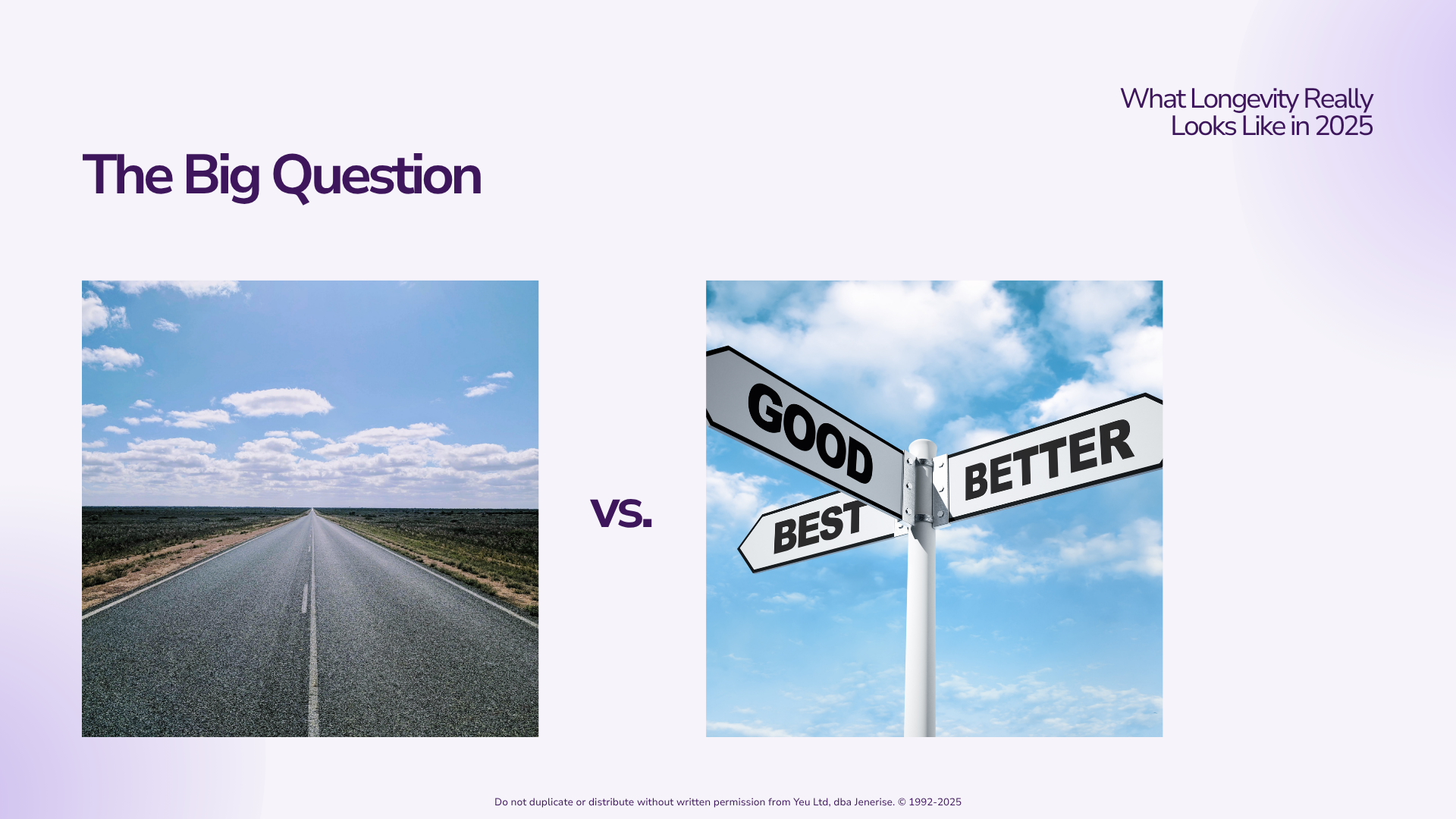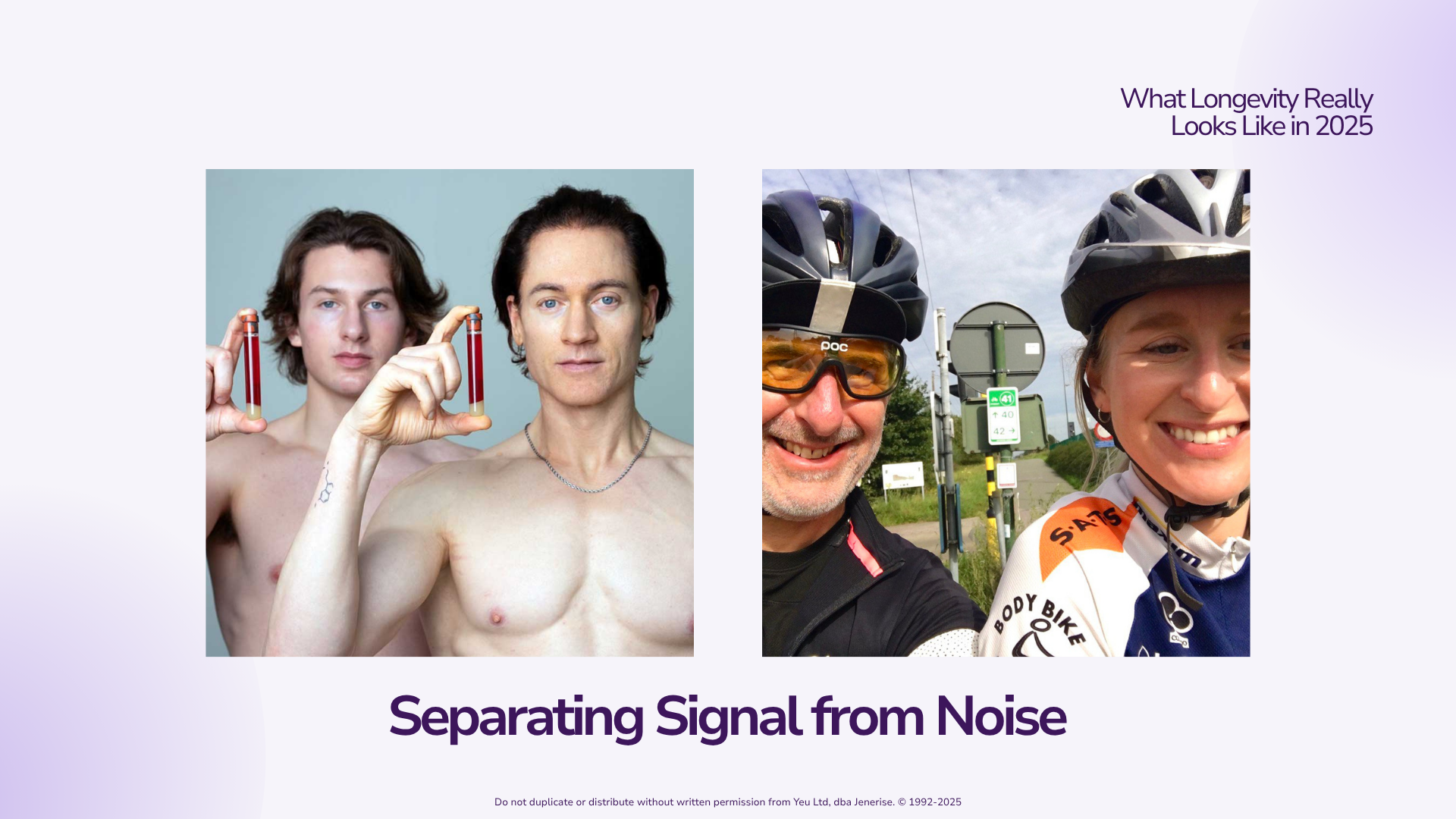What Longevity Really Looks Like in 2025
A few years ago, “longevity” was a word mostly reserved for scientists, billionaires, and biohackers. Fast-forward to 2025, and it’s a topic being debated everywhere from policy panels to podcasts, from boardrooms to dinner tables.
I gave a talk this week at TAS Life’s 2nd International Medical Insurance Conference about what longevity really looks like right now. Not the hype, not the glossy “live to 150” headlines, but the tangible, evidence-based shifts already happening in Europe and beyond.
Here’s a snapshot of what I shared.
In the last two decades, global life expectancy has climbed from around 67 to just over 73 years. In Europe, the average sits higher (roughly 81.5 years), but the number that matters more is our healthy life expectancy.
Because those extra years? Many of them are spent managing disease, fatigue, or mobility loss. Across the EU, people live on average to 81, but only about 63 of those years are in “good health.” The rest are years of limitation. That’s the real longevity gap: the difference between lifespan and healthspan. If you zoom in on it, the story becomes clear: the challenge ahead isn’t just adding years to life, but adding life to years.
The old way of thinking about aging, how many birthdays you’ve had, feels blunt now. Two people can be 70 and live in completely different bodies. That’s where biological age comes in. It’s the idea that your body’s real age is measured by its cells, resilience, and recovery, not your calendar.
Biological age testing is moving fast. Tools like InsideTracker, GlycanAge, and Elysium Index are putting that kind of data in people’s hands, and it’s changing how we think about personal health. We’re moving from counting years to understanding systems: energy, metabolism, inflammation, and recovery.
For the first time, the science and the consumer interest are aligning.
There’s extraordinary work happening at the frontiers of longevity research. Scientists are exploring how to clear “senescent” (zombie) cells, rebalance immune aging, and restore mitochondrial function through NAD+ interventions. Stem cells and regenerative medicine are evolving quickly too. But here’s the honest bit, most of it isn’t ready for the average person yet. Many of these breakthroughs are still in trials or available only in medical or elite settings.
It’s fascinating, but it’s not where most people’s health journeys begin. If you want to see where longevity is already shaping daily life, look at the shopping baskets, not the biotech labs.
Across Europe, consumers are quietly building their own “longevity stacks” and most of it looks pretty practical:
Creatine and protein – no longer just for athletes!
Collagen – part beauty, part biology, appealing to people who want to invest in long-term health in a way that feels simple.
Omega-3s & micronutrients – the most proven anti-inflammatory support you can buy over the counter.
Movement tools – weighted vests, kettlebells, resistance bands. Affordable, physical investments in future health.
Personalised offerings – challenger brands like Myoform are continuing to give people access to personalised supplements based on their biology, something that provides a deeper level of understanding and knowledge
This is what I call everyday longevity: small, accessible actions that help close the gap between healthspan and lifespan. It’s not flashy, but it’s where the biggest impact happens.
For insurers, health systems, and policymakers, longevity isn’t just a wellness trend; it’s actually an economic strategy.
The “longevity economy” is projected to become a multi-trillion-euro sector spanning biotech, diagnostics, and preventive care. And it makes sense. If Europe could increase the average healthy lifespan by even three years, it would translate into hundreds of billions saved in healthcare costs, not to mention a better quality of life for millions.
But there are questions too: how do we make access equitable? How do we regulate new biomarkers and data sharing responsibly? And how do we stop overpromising before the science catches up?
It’s about living well enough to do the things (and be with the people) that matter most.
At Jenerise, we think a lot about this idea of “healthspan”, the ability to stay physically and mentally strong across decades, not just years. Longevity isn’t about chasing youth; it’s about protecting capacity. Because if you live to 95, the real question isn’t how long you’ve lived. It’s how well you’ve lived those years. And right now, that’s a story worth telling differently.
We all rise together,
Rachael Jennings | Co-Founder + CBO, Jenerise




